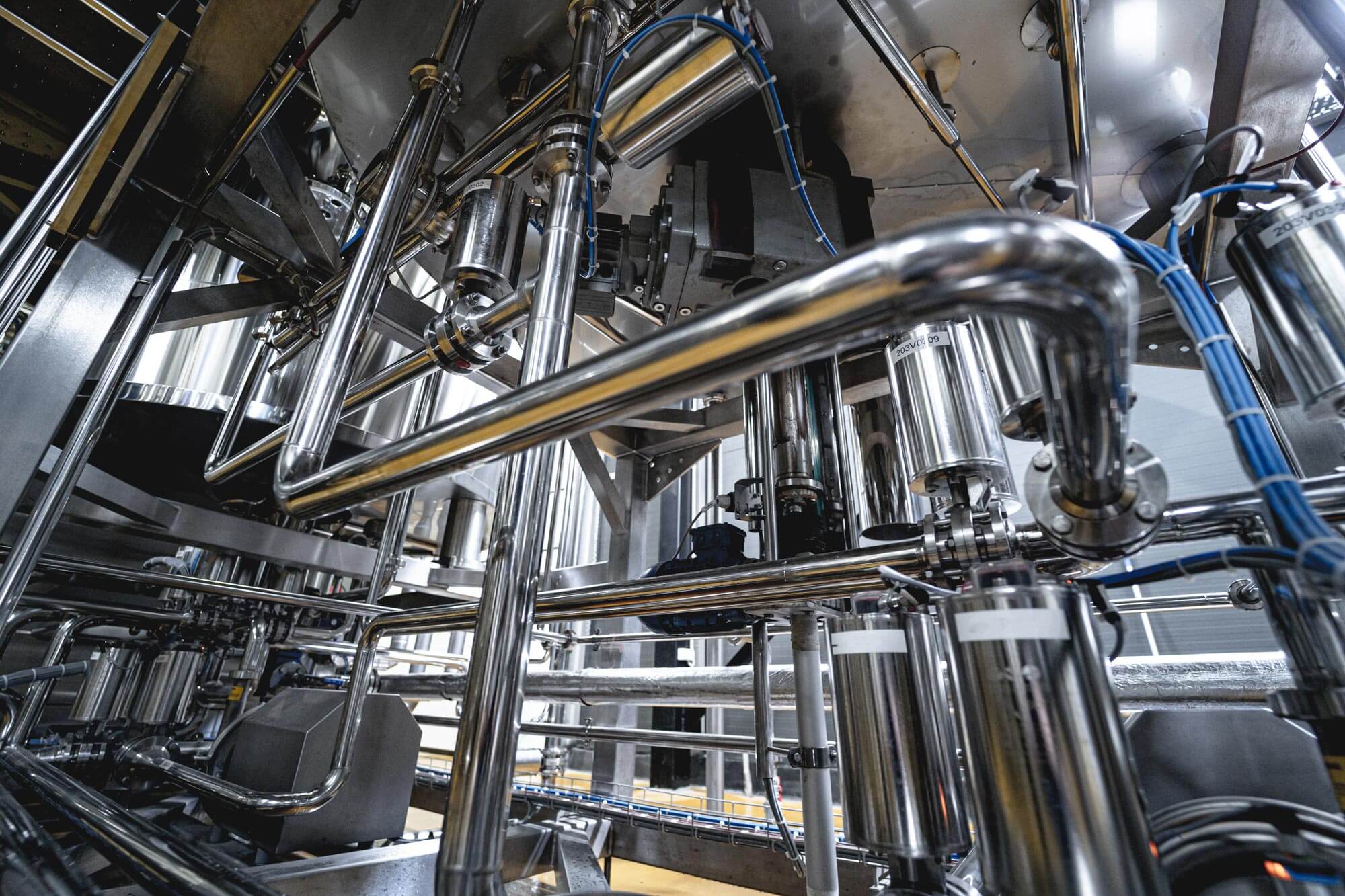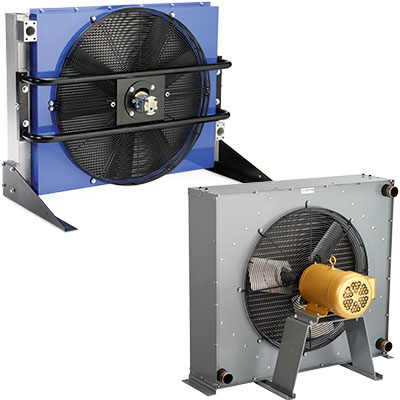A Comprehensive Guide to Choosing the Right Heat Transfer Equipments for Your Demands
Choosing the proper Heat transfer system is important for operational effectiveness. Numerous systems satisfy various demands, affected by aspects such as temperature level array and liquid kind. Recognizing the principles behind Heat transfer, such as radiation, transmission, and convection, is important. In addition, assessing power sources and upkeep techniques can impact long-term efficiency. A closer evaluation of these considerations discloses just how to customize a system to details requirements. What should one prioritize in this facility decision-making process?
Understanding Heat Transfer: Key Ideas and Principles
Although Heat transfer may appear like a straightforward concept, it includes an array of concepts that are fundamental for efficient system design. Recognizing these principles is necessary for designers and engineers that intend to optimize thermal efficiency in different applications. Transmission, for example, includes the transfer of Heat via solid products, while convection describes the movement of Heat within liquids. Radiation, another crucial concept, describes how Heat can be transferred via electromagnetic waves. Each of these systems plays an essential function in determining exactly how energy relocates within a system. By extensively grasping these principles, experts can make educated choices, making certain that Heat transfer systems operate efficiently and satisfy the particular needs of their applications
Sorts Of Heat Transfer Solutions: An Overview
Understanding the concepts of Heat transfer prepares for discovering the different sorts of Heat transfer systems readily available. Heat transfer systems can be categorized largely right into three types: conduction, radiation, and convection. Conduction involves Heat transfer with strong materials, relying on direct contact in between bits. Convection, on the other hand, takes place in liquids (fluids and gases) where the movement of the liquid itself facilitates Heat transfer. Radiation involves the transfer of Heat through electromagnetic waves and does not need a tool, permitting it to occur in a vacuum cleaner. Each kind of system has distinctive features and applications, making it important for individuals and companies to thoroughly analyze their particular demands when picking the most suitable Heat transfer service.
Applications of Heat Transfer Equipments in Various Industries
Heat transfer systems play a crucial role throughout numerous industries, influencing performance and product quality. In commercial production processes, they promote specific temperature control, while in food and drink processing, they guarantee safety and preservation. Furthermore, heating and cooling and environment control systems depend heavily on reliable Heat transfer to maintain comfortable environments.
Industrial Manufacturing Processes

Countless commercial manufacturing procedures depend greatly on effective Heat transfer systems to make best use of efficiency and improve item quality. In sectors such as metalworking, Heat exchangers play a crucial function in preserving excellent temperatures throughout welding, spreading, and forging. These systems ensure uniform Heat distribution, which is essential for attaining wanted material buildings. In the chemical manufacturing industry, Heat transfer systems assist in exact temperature level control throughout reactions, impacting yield and safety. In textile manufacturing, reliable Heat management is crucial for dyeing and ending up processes, influencing shade consistency and material high quality. By picking suitable Heat transfer innovations, producers can boost power performance and lower functional expenses, eventually leading to a more competitive and sustainable manufacturing setting.
Food and Drink Processing
Effective Heat transfer systems are just as essential in the food and beverage processing industry, where keeping ideal temperatures is essential for food safety and security and high quality. These systems play an essential duty in processes such as cooking, sanitation, and pasteurization, making sure that products are safe for usage and preserve their dietary value. Heat exchangers, for example, efficiently transfer Heat between liquids, maximizing power usage while lessening temperature level variations. Additionally, refrigeration systems are basic for prolonging and maintaining subject to spoiling items life span. The selection of Heat transfer innovation directly affects operational efficiency and item stability, making it critical for food and drink makers to pick the suitable systems customized to their particular handling needs. This cautious option inevitably adds to customer contentment and food safety.

A/c and Climate Control
While lots of industries count on Heat transfer systems for effectiveness, HVAC (Heating, Air Flow, and A/c) plays a necessary function in preserving indoor climate control across numerous setups. These systems use Heat transfer concepts to control air, moisture, and temperature top quality, guaranteeing convenience and safety in household, commercial, and commercial settings. Correctly developed HVAC systems boost power effectiveness, lower functional costs, and reduce environmental influence. In business buildings, for example, efficient climate control adds to employee productivity and client contentment. In industrial applications, cooling and heating systems aid maintain ideal problems for devices procedure and item preservation. Choosing the right Heat transfer system is crucial for meeting details environment control requirements and achieving total system efficiency.
Examining Power Sources for Heat Transfer Systems
In reviewing energy sources for Heat transfer systems, a contrast of renewable energy choices and fossil fuel factors to consider is important. Eco-friendly sources, such as solar and wind, offer lasting choices that can reduce environmental impact. Alternatively, fossil gas continue to additional resources be widespread because of their established framework and power thickness, triggering a careful analysis of both options.
Renewable Power Options

Fossil Fuel Factors To Consider
Reviewing fossil gas considerations is vital for the effectiveness and sustainability of Heat transfer systems. Fossil gas, such as gas, oil, and coal, are standard power sources that give substantial Heat outcome, making them preferred choices for commercial and household applications. However, their environmental impact, consisting of greenhouse gas discharges and resource deficiency, raises worries. When choosing a warmth transfer system, it is important to evaluate the availability, cost, and governing aspects connected with these fuels. In addition, the efficiency of nonrenewable fuel source systems need to be taken into consideration, as higher efficiency can alleviate some environmental drawbacks. Ultimately, a balanced method evaluating performance and sustainability can direct decision-makers toward the most suitable Heat transfer service for their specific needs.
Aspects to Take Into Consideration When Choosing a Heat Transfer System
Picking an ideal Heat transfer system calls for mindful consideration of various aspects that can considerably affect effectiveness and efficiency. One vital variable is the operating temperature array, which determines the products and layout suitable for the application. Furthermore, the kind of liquid made use of in the system-- whether gas or liquid-- influences Heat transfer performance and compatibility. The system's size and ability should straighten with the certain requirements of the procedure to avoid ineffectiveness. Energy source schedule is also crucial, affecting operating expense and sustainability. In addition, the setup atmosphere, consisting of room restrictions and access for maintenance, plays a significant function in system selection. Lastly, regulative conformity and safety and security requirements have to be thought about to assure the system fulfills all lawful requirements.
Upkeep and Effectiveness Optimization for Heat Transfer Equipments
Keeping Heat transfer systems is necessary for ensuring optimal effectiveness and longevity. Routine upkeep tasks, such as cleansing Heat exchangers and checking insulation, assistance avoid efficiency losses because of fouling and thermal connecting. Additionally, keeping an eye on system parameters, consisting of pressure and temperature level, enables very early discovery of anomalies, decreasing downtime and costly repair work. Implementing a precautionary maintenance schedule can optimize efficiency and extend the life expectancy of parts. Furthermore, updating to advanced control systems can enhance operational performance by changing to differing tons and problems. By focusing on upkeep and efficiency optimization, drivers can attain decreased energy consumption, lower operational costs, and enhanced overall system integrity, ultimately bring about much better resource use and a much more sustainable procedure.
Future Patterns in Heat Transfer Technologies
As sectors increasingly focus on sustainability and power effectiveness, future patterns in Heat transfer modern technologies are established to undergo substantial makeovers. Developments such as advanced materials, consisting of carbon nanotubes and nanofluids, assure improved thermal conductivity and efficiency. In addition, the combination of renewable resource have a peek here sources right into Heat transfer systems is acquiring momentum, advertising environmentally friendly remedies. Smart innovations, consisting of IoT sensing units, are anticipated to revolutionize tracking and control, allowing real-time information analysis for maximized efficiency. In addition, the visit site advancement of small and modular systems will assist in less complicated setup and upkeep, providing to diverse applications. These developments show a change towards more lasting, effective, and adaptable Heat transfer options, straightening with global energy goals and environmental requirements.
Frequently Asked Questions
What Are the Ecological Impacts of Heat Transfer Systems?
The environmental influences of Heat transfer systems can consist of greenhouse gas discharges, power consumption, and possible thermal air pollution. Furthermore, incorrect disposal of ineffectiveness and materials can add to resource exhaustion and environment interruption.
Exactly how Do I Compute the Cost-Effectiveness of a Warm Transfer System?
To determine the cost-effectiveness of a warm transfer system, one need to analyze initial prices, functional expenses, upkeep needs, and power efficiency, comparing these variables versus the expected lifespan and efficiency of the system.
Can Heat Transfer Systems Be Used in Residential Setups?
Heat transfer systems can indeed be made use of in property settings. They supply reliable home heating and cooling down services, making homes more comfy while potentially lowering energy expenses. Their versatility permits for various applications in property atmospheres.
What Safety Laws Relate To Heat Transfer Solutions?
Security policies for Heat transfer systems typically consist of standards on procedure, upkeep, and installment. Compliance with regional building regulations, supplier specs, and industry requirements is vital to guarantee safe and reliable system performance in numerous applications.
Just How Do Different Products Affect Heat Transfer Performance?

Conduction, for instance, involves the transfer of Heat with solid products, while convection refers to the movement of Heat within fluids. Comprehending the concepts of Heat transfer lays the groundwork for exploring the different kinds of Heat transfer systems available. Heat exchangers, for circumstances, successfully transfer Heat between liquids, optimizing energy usage while reducing temperature variations. In assessing power sources for Heat transfer systems, a contrast of eco-friendly energy options and fossil fuel considerations is vital. Steels, such as copper and aluminum, conduct Heat effectively, whereas insulators like rubber and glass slow down Heat circulation.